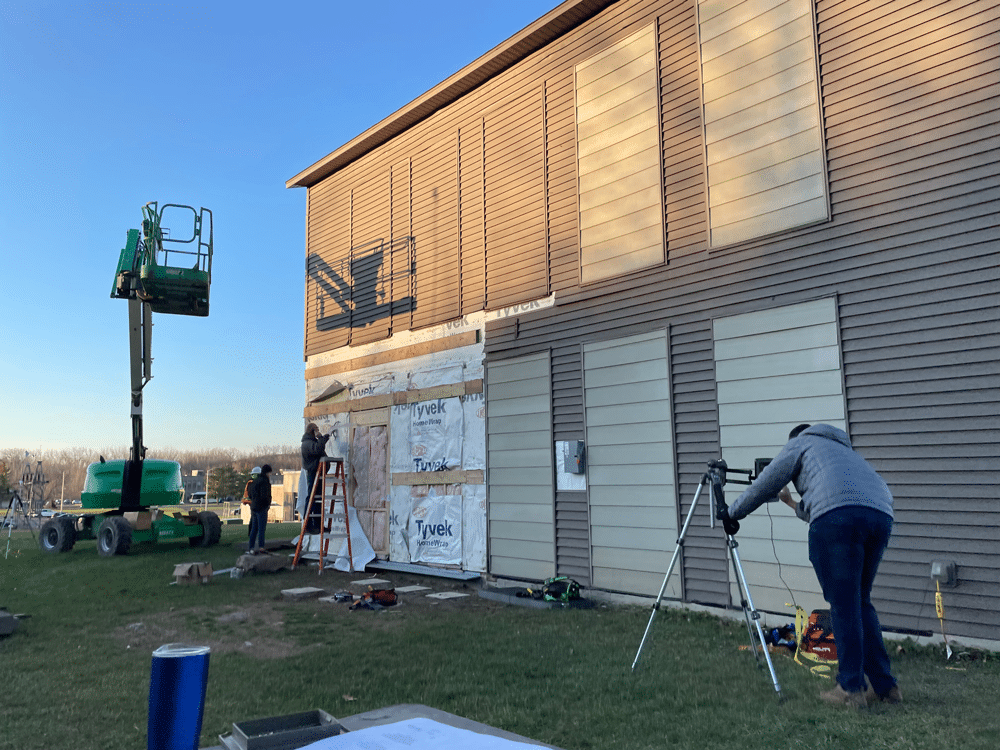With the help of NYSTAR-backed centers, researchers and companies are developing new ways to heat and cool buildings for a carbon-neutral future
It’s no secret that buildings of all kinds — from homes to apartment buildings to offices — are contributing to climate change. Traditional heating, ventilation and air conditioning (HVAC) systems are a big reason why buildings account for nearly one-third of greenhouse gas emissions.
Empire State Development’s Division of Science, Technology and Innovation (NYSTAR) is invested in finding cleaner, greener HVAC systems. The network has been supporting research, development, and commercialization of clean technology for decades, and three recent projects are addressing the need for more efficient ways to heat and cool commercial and residential buildings.
Retrofitting for efficiency
It seems fitting that Syracuse, home to an historic cluster of companies and university faculty with expertise in HVAC innovation, is also at the forefront of re-imagining indoor climate control.
Two projects at the Center of Excellence in Environmental and Energy Systems at Syracuse University (SyracuseCoE) aim to make heating and cooling more climate friendly using an unlikely source — a building’s exterior.
The first project involves a multidisciplinary team of Syracuse University researchers, who have partnered with Cycle Architects, Taitem Engineering, TKFabricate, Signetron, cocoon construct, and others to develop an innovative “wrap” for homes in cold climates, making them more energy efficient by keeping more cold or warm air inside the dwelling. The research team includes faculty from the Syracuse School of Architecture and the College of Engineering and Computer Science and is also funded by the U.S. Department of Energy and NYSERDA.
“We have a vast number of existing buildings that are going to be around for a while. Many of these were built prior to building codes that require improved energy performance. Rather than demolish these older buildings and build new construction, which can be incredibly energy-intensive, there’s a tremendous opportunity for energy savings through deep energy-efficiency retrofits,” said Bess Krietemeyer, associate professor in the School of Architecture and the project lead.
“We’re targeting low- to moderate-income buildings in cold climates, which are typically poorly insulated, to make it easy for building owners to implement. Creating access to healthier and more comfortable housing options is one of our major motivations,” Krietemeyer added.
The project features three major innovations:
- A highly insulated envelope system — imagine a coat for a building — that provides thermal performance and airtightness at the walls, roof and foundation while being attached to the exterior of an existing building.
- A high-efficiency mechanical pod system featuring real-time performance monitoring for heating, cooling, ventilation and hot water that is incorporated into the envelope panel system.
- Pre-retrofit assessment software that ensures a good fit to the building.
Meanwhile, SyracuseCoE is also working with Hydronic Shell Technologies, a NYC-based company that has developed an innovative approach to HVAC in which the heating, cooling, and ventilation inside the building comes from the exterior walls.
In essence, the Hydronic Shell integrated solution also wraps around the exterior of a building, like a blanket, but with a system containing the technology needed to heat and cool while improving air quality and reducing carbon emissions.
Along with the health and environmental benefits comes another perk: since the system is external, apartment dwellers experience minimal disruption during installation, adding a level of efficiency, and privacy, to the process.
The company is primarily targeting multifamily affordable housing in certain communities where this technology can dramatically reduce operating costs and improve quality of life.
Electrifying HVAC and reducing refrigerants
Electrification is key to carbon neutrality. However, with HVAC, there’s still the issue of refrigerants, which can be harmful to the environment.
Enter MIMiC Systems. The Brooklyn-based company has developed an electrified solid-state heat pump that provides heating and cooling in one device. Its solution is DC-powered, quieter, and less carbon intensive than traditional compressor-based systems — with zero refrigerants.
Working with the Center for Future Energy Systems (CFES) at Rensselaer Polytechnic Institute on prototype development, MIMiC’s solid-state heat pump requires no moving parts, making the system maintenance-free and reducing the cost of operation.
Solid-state heating and cooling eliminates the need for refrigerants that are commonly used in commercial HVAC systems. Some of those refrigerants include ozone-depleting chemicals that can be as harmful to our climate as carbon emissions.
SyracuseCoE and RPI’s CFES are just two centers funded by NYSTAR — a network of more than 70 assets — engaged in research, development and support of new technologies.
By investing in HVAC technology innovations that can be used in new construction or layered onto existing buildings, NYSTAR network investments are helping New York companies take their ideas to the next level — and contributing to a greener future for the world’s population.

